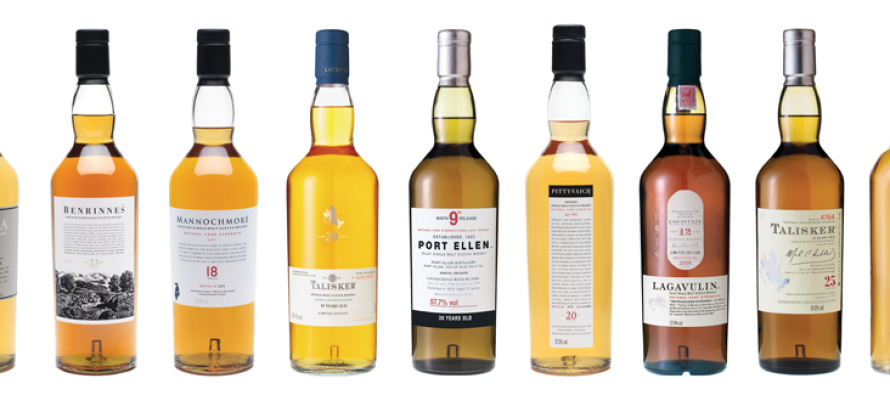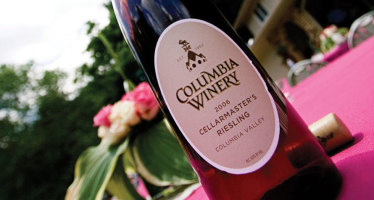Scotch, Scotch and More Scotch

As a recent convert from bourbon to Scotch, I’ve found myself adrift in a sea of insane prices, limited releases and fluctuations in quality. While whisky is seeing a spike in demand and prices, it is also seeing a dip in availability of old and high quality whisky.
So here I am to help explain what exactly Scotch is, what makes it so special and how to best enjoy it in this current frenzied climate of supply and demand. I’ll give a quick tour of the different regions of Scotch production, suggest some good examples to try and give a few tips for getting the most out of your tasting experience. If you’ve got a whisky on hand, now would be a good time to pour a glass.
A Few Basics
Scotch is whisky distilled from malted barley produced and matured in Scotland. It is aged for a minimum of three years (though a standard offering is usually around 10) and can be bottled at no less than 40% alcohol by volume. It comes in two varieties: single malts and blends. A single malt is whisky produced at one distillery and a blend is a mixture of malt whisky from one or multiple distilleries and grain neutral spirits (clear, unaged spirit made of a mix of grains). Expensive blends like Johnnie Walker Blue are made exclusively of malts. I’ll be focusing mainly on single malts since that’s what I’ve found most enjoyable in my whisky journey this far, and what I’ve found myself spending the majority of my drinking money on.
Fun Fact
If Scotland were a U.S. state it would be the 41st largest, about the size of South Carolina. Yet the range of flavors to be found in the range of Scotch whiskies is astounding. There are six geographical regions of Scotch production, each with individual flavor profiles ranging from light and floral to intense and smoky.
Regions
The Lowlands are home to a mild and light style of whisky. In the 19th century this region was home the highest volume of producing distilleries in Scotland. Now, there are only four distilleries left in operation.
A dram (one measure of whisky, usually two ounces) of Auchentoshan or Glenkinchie is a nice way to relax if you aren’t in the mood for anything too demanding or complex. One of the reasons for this is their trademark use of triple distillation which rounds out some of the rougher flavors and textures of more typical double distilled whiskies. Geographically, the lowlands is about the lower half of the Scottish mainland.
It will come as no surprise then, that the northerly half of the mainland is called the Highlands. It is home to some of the more famous and recognizable distilleries such as Glenmorangie, Oban, and Macallan. These malts typically have more assertive floral and citrus qualities than their Lowland counterparts.
Speyside is its own small region within the Highlands that contains nearly half of Scotland’s operating distilleries. This is a fascinating example of the term provenance in the Scotch whisky industry. It basically means you can’t make this stuff just anywhere. There are reasons why Highland malts made in this particular river valley have the capacity to develop a range of deeply complex flavors, and other locations are without a distillery at all. There are reasons why a certain cask at one end of a warehouse will yield a different tasting spirit than another cask containing the same juice at the opposite end. We just aren’t sure what those reasons are.
Scotch is a mysterious spirit in that way, but much has been learned and handed down through the centuries of its production. Let’s run through a few more things now. The quality and complexity of the final product is essentially down to a prolonged interaction between quality spirit and quality wood. Scotch is aged in primarily ex-bourbon barrels from the good old U.S. of A, as well as ex-Sherry and to a lesser degree, wine casks. Speysiders, like Macallan, are famously notorious for maturing well in Sherry casks. If you’ve tried one of these delicious (but expensive) whiskies rich in dark fruit, do your wallet a favor and try an Aberlour, a Glenfarclas or a Glendronach, if you can find it.
Continuing our regional journey in the southwest corner is a dwindling region called Campbeltown. Once home to 30 distilleries, it now has only two. Springbank is one of several “craft” distilleries now presenting their malts at 46% alcohol by volume, non-chill filtered, and natural color, something coveted by experts and purists. Something of note here is this term “natural color.” If a whisky does not state these words on its label it is likely the distillery are using e150a caramel colorant to darken the color of their whisky for the purpose of making it look sexier to the consumer. The practice is controversial, but widespread. Knowledge is power, I guess, and the best way to speak to companies is with your dollar.
I’ve been speaking to a number of Islay distilleries with my dollars, mainly saying monosyllabic things like, “yum,” and “wow.” Islay (pronounced EYE-luh) is one of Scotland’s several whisky producing islands but, since it is home to eight distilleries, it is considered its own region. It boasts big, smoky, peaty flavor profiles from such whisky giants such as Laphroaig, Ardbeg and Lagavulin. So what exactly is peat? It is a layer of partially decayed and compacted vegetation cut out of the ground, dried and burned to roast the barley prior to fermentation.
Though it does produce some fantastic unpeated whiskies such as Bruichladdich’s The Laddie 10, it is most well-known for the medicinal, smoky, earthy flavors of peat. These are undoubtedly some of the boldest flavor profiles around and tend to not be as immediately accessible as some of the other regions. The key to enjoying these whiskies is not so much “getting past” the peaty flavors; iodine, smoke, tar, Band-Aid, etc., as it is getting beyond them. It is the harmony and balance between these ancient, earthy flavors, and the other flavors of citrus, toffee, vanilla, and influence of the sherry and/or bourbon cask that make these whiskies so enjoyable. A few of my favorites are Ardbeg Uigeadail, Laphroaig Quarter Cask and Kilchoman Machir Bay.
The final region of Scotch production is an unofficial one in the eyes of the Scotch Whisky Association, but it’s good enough for me; the Islands. Any island other than Islay producing whisky fits into this category and it serves as a good reminder that the geographical regions are not married to their typical flavor profiles. Island whiskies come from Jura, right next to Islay to Orkney, nearly part of Scandinavia in the north. Perhaps the most notable is Talisker from the Isle of Skye. It is peaty in a noticeably different way than the majority of Islays. It has more of a light saltwater air brininess to it, which is really quite delicious.
Thanks for joining me on this quick tour of Scotland’s whisky producing regions. I hope you’ve got an idea for what whisky you’d like to try next in your journey, and have a little bit better idea what it is you’re drinking when you do. Next I’ll offer a few opinions for getting the most out of your whisky drinking experience.
Rules of Enjoyment
Perhaps the number one rule for enjoyment is, ‘Drink it how you like it (but be willing to experiment)’. Some people only drink whisky with ice because they fear the alcohol burn, while some only drink it neat because they perceive themselves as purists. In truth, neither are getting the full range of experience a good Scotch whisky provides.
With that said, no Scotch worth spending money on needs ice. A small amount of water (anywhere from three drops to three teaspoons) can “open up” a scotch, shortening the alcohol burn and releasing different flavors. Most Scotch in the U.S. market is bottled between 40 and 46% alcohol by volume. Some are bottled at cask strength, usually between 50 and 60%. These will take a bit more water, but not only will the melting ice eventually drown the flavors you probably paid good money to experience, the chilling of the spirit also deadens certain chemical compounds important for tasting. Ultimately, it’s up to you to experiment and find how you enjoy it best. If I’m going to add water to a whisky, I’ll add a little bit at a time to see what happens as the ratio of water to alcohol increases.
When you drink Scotch, savor it. Take small sips. Let the whisky sit on your tongue for a few seconds and take note how the flavors arrive and change. “Chew” the whisky by moving it around your mouth, coating the entirety of your mouth and getting your head inundated with the flavors. I probably don’t need to tell you that the senses of smell and taste are strongly linked. Smelling is arguably just as important in the whisky experience as tasting. Put your sniffer in the glass almost as often as you take a sip. Breathe in gently through your nose and out through your mouth and sniff gently. Don’t try too hard and let the aromas that are there come to you.
Proper glassware can be helpful for smelling and tasting everything that is there in a whisky. The universal whisky tasting glass is the Glencairn or a Copita. Both of these fancy looking glasses are not really that expensive and are worth the investment in my opinion. The key feature here is that, unlike a tumbler, they get narrower at the top so the aromas get concentrated in one place. It functions like a wine glass in this way. If you do not have one of these two whisky tasting glasses, a wine glass is a fine alternative.
Last but not least, take it easy. Scotch is a drink to be savored and appreciated. Also, have a glass of water as you’re drinking. After two or three, your ability to really taste what’s going on in the glass seriously diminishes – and that’s probably a good sign that it’s time to stop.
I hope these small pieces of information and opinions will help you on your Scotch whisky journey wherever you are. Cheers!
Related Articles
The Perfect Wine
Recently spotted wine review: “Voluptuous and powerful….reminds me of Angelina Jolie (substitute Brad Pitt or George Clooney).” Now, if that
Bartender Portrait: Phoe Mess
I sat down with Phoe Mess for this issue’s bartender portrait. Phoe and I have a known each other for
Newly Opened Cedar Lounge Hits the Mark
When Nick O’Connor opened Cedar, one of Omaha’s most recent lounges in November of 2015, his goal was to provide
No comments
Write a commentOnly registered users can comment.














